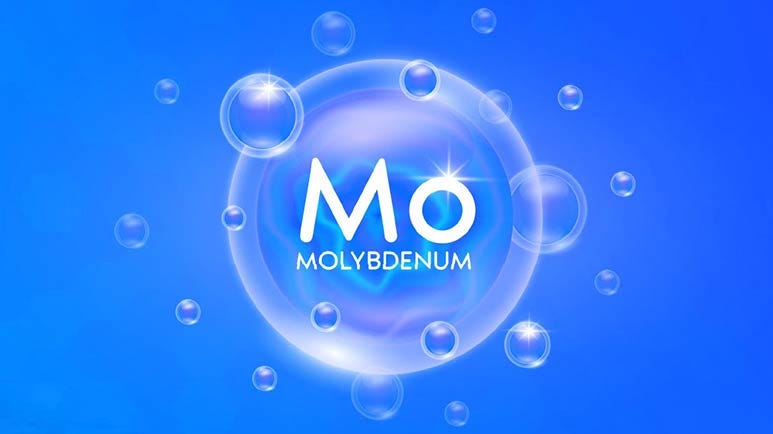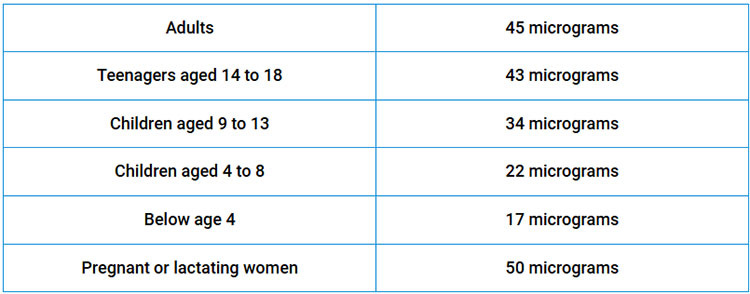What Is Molybdenum?
Molybdenum is a mineral that facilitates the breakdown of amino acids in your body and is a catalyst for enzymes to help metabolize fats and carbohydrates.
STORY AT-A-GLANCE
Molybdenum is a trace mineral found in unfiltered water, cheese, grains, leafy greens and liver
When plants fail to take up molybdenum properly, carcinogenic nitrosamines are produced because the enzyme nitrate reductase can't perform properly without molybdenum
Where there is little access to foods containing it, minimal dietary molybdenum is associated with esophageal and stomach cancers and other diseases
Editor's Note: This article is a reprint. It was originally published October 17, 2016.
What's found in unfiltered water, cheese, grains, leafy greens and liver? If you said molybdenum, you're right, but few realize that this little-known trace element is essential to nearly every life form on Earth.
Molybdenum is an essential catalyst for enzymes to help metabolize fats and carbohydrates and facilitate the breakdown of certain amino acids in your body.1 Its role is essential to your health. Tooth enamel contains high amounts of molybdenum, and the mineral helps decrease tooth decay.
In humans, a molybdenum deficiency, albeit a rarity and usually exclusive to those who have to be fed intravenously, leads to issues such as headache, rapid heartbeat, mental health problems and even coma. Signs of deficiency include problems with uric acid production and decreased metabolism of sulfur-containing amino acids.
It's a good thing it's in all those foods listed above. However, the amount found in plant-based foods is in direct relation to how much is found in the soil in which they grow. Molybdenum is also available as a supplement in liquid and capsule form. Tetrathiomolybdate is a form of molybdenum that lowers copper levels in the body, so it's effective in treating fibrotic, inflammatory and autoimmune diseases.
As reported by Livestrong, molybdenum is a necessary element in soil to prevent the production of cancer-causing agents known as nitrosamines in plant foods. Animal studies have also shown that:2 3
"[Molybdenum] dramatically inhibits pulmonary and liver fibrosis, which is thickening and scarring of tissue, helps prevent liver damage from acetaminophen and reduces heart damage from doxorubicin, a bacterial antibiotic. Tetrathiomolybdate also shows a partially protective effect against diabetes."
In technical terms, for humans, molybdenum is known to function as a cofactor (a compound needed for an enzyme to do its job) for four enzymes:
Sulfite oxidase — Vital for human health, this enzyme brings about the rapid change from sulfite to sulfate, a reaction that is necessary for the use in your body of sulfur-containing amino acids, the "building blocks" of proteins methionine and cysteine.
Xanthine oxidase — This enzyme catalyzes the breakdown of nucleotides, precursors to DNA and RNA, which then form uric acid, helping to retain clotting factors in plasma and resist reactive oxygen species (ROS) for antioxidant capacity of the blood.
Aldehyde oxidase and xanthine oxidase — These enzymes are involve a number of molecules with similar chemical structures and help metabolize drugs and toxins.
Mitochondrial amidoxime-reducing component (mARC) — Relatively new in terms of discovery of its role in the body, mARC accelerates the removal of certain toxic substances.4
Molybdenum and Supplemental Amounts
One way molybdenum helps you stay healthy is by breaking down what you eat, including proteins. What's not used immediately, it's stored for future use but most of it leaves your body through urination. Interestingly, grazing animals known as ruminants, have multiple stomachs. In their digestive tracts, compounds containing sulfur and molybdenum form thiomolybdates, which prevent copper absorption and trigger fatal copper-dependent disorders.5
A similar problem happens in humans, so thiomolybdate therapy is sometimes used as a treatment for a genetic disorder called Wilson's disease, which causes copper to build up and eventually damage your liver and brain. It's also used for inflammatory diseases and certain types of cancer. According to the Linus Pauling Institute:6
"Copper is also a required cofactor for enzymes involved in inflammation and angiogenesis, known to accelerate cancer progression and metastasis. Copper depletion studies employing TM [thiomolybdate] have been initiated in patients with advanced malignancies with the aim of preventing disease progression or relapse.
These pilot trials showed promising results in individuals with metastatic kidney cancer, metastatic colorectal cancer and breast cancer with high risk of relapse."
Most people in the U.S. obtain the molybdenum they need exclusively through their diets, which is preferable. But if this isn't possible, supplementation is another option. Below are the recommended daily allowances (RDA) of molybdenum, according to the National Institute of Medicine. However, while these amounts will likely prevent a deficiency, there's currently no scientific evidence that taking more is healthy; and too much has been proven to be harmful.
Soil Lacking Molybdenum Linked to Cancer of the Esophagus
In areas where there is little access to molybdenum-rich foods, minimal dietary molybdenum is associated with esophageal and stomach cancer. For instance, in a small region of Northern China, cancer of the esophagus and stomach is 10 times higher than China's national average and 100 times higher than the average in the U.S. According to one study:7
"The soil in this region is low in molybdenum and other mineral elements; therefore, dietary molybdenum intake is also low.
Studies conducted in other areas of low and high incidence of esophageal cancer showed that content of molybdenum and zinc in hair and nails is significantly lower in inhabitants of high-risk regions compared to cold spots.
Moreover, esophageal cancer patients display reduced content of the trace elements compared to healthy relatives."
It's thought that by adding ammonium molybdate to the soil, the cancer cases will decrease. However, dietary supplementation of minerals, including molybdenum, and vitamins in the Linxian area of China did nothing to decrease the cancer mortality rates over a five-year period.8
At the same time, Rugao, a county in the Chinese province of Jiangsu, is known for its octogenarian residents. Dietary habits, traditions and lifestyles are similar to surrounding areas, with this one difference — Rugao has a "large number" of different soil types, which may have something to do with the remarkable longevity of its residents. According to a study published in the journal Environmental Geochemistry and Health:9
"The ratio of people over 90 years old per 100,000 inhabitants (90-rate) based on the village (about 4,000 residents in 4 km(2)) was correlated with trace elements in soil, drinking water, and rice by means of correlation analysis … Similar relationships between the available elements in soils and elements in water and rice were found.
These results suggest that: (1) the available forms of elements in soil were more [essential] to elemental bioavailability in the ecosystem and human health than total elements in soil; and (2) the element association above might have affected the 90-rate positively and could be an important environmental geochemical factor influencing the longevity of humans."
Nitrosamines and NMMG — Known Carcinogens
Scientists believe high incidences of certain cancers are linked to dietary or environmental factors including increased intake of nitrosamines, which are known carcinogens that are found more often in plant foods grown in molybdenum-deficient soils. Livestrong notes that:10
"When there's a deficiency of molybdenum uptake in plants, nitrosamines are produced because nitrate reductase — an enzyme — can't perform properly without its molybdenum cofactor."
According to a National Toxicology Program report of the U.S. Department of Health and Human Services,11 in the case of tobacco use, saliva reduces nitrates to nitrites, which form these harmful compounds in the gastrointestinal tract, an internal formation that is a "major cause of human exposure to N-nitrosamines."
Further, a derivative, MNNG (N-Methyl-N′-nitro-N-nitrosoguanidine) was shown to be "reasonably anticipated to be a human carcinogen based on sufficient evidence of carcinogenicity from studies in experimental animals." It caused tumors in several different animals through different types of exposure.
According to the U.K.'s Department for Business, Enterprise and Regulatory Reform, nitrosamines are toxic in more animal species than any other category of chemical carcinogen.12 Health concerns from nitrosamines include cancer, organ system toxicity, endocrine disruption and more. Molybdenum's antioxidant properties help break down toxins in your body, including cancer-causing nitrosamines from foods and other sources.
Disclaimer: The entire contents of this website are based upon the opinions of Dr. Mercola, unless otherwise noted. Individual articles are based upon the opinions of the respective author, who retains copyright as marked.
The information on this website is not intended to replace a one-on-one relationship with a qualified health care professional and is not intended as medical advice. It is intended as a sharing of knowledge and information from the research and experience of Dr. Mercola and his community. Dr. Mercola encourages you to make your own health care decisions based upon your research and in partnership with a qualified health care professional. The subscription fee being requested is for access to the articles and information posted on this site, and is not being paid for any individual medical advice.
If you are pregnant, nursing, taking medication, or have a medical condition, consult your health care professional before using products based on this content.




